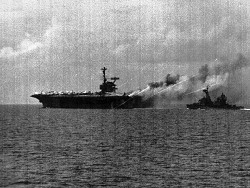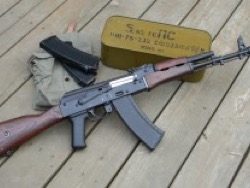
Heavy flamethrower system “Pinocchio” is a unique Russian weapon used to destroy heavily fortified enemy positions, writes the National Interest. As the newspaper notes, the firepower of this war machine second only to tactical nuclear weapons.
TOS-1 “Buratino” − the unique Russian jet system of volley fire, which participated in conflicts around the world, including Afghanistan, Chechnya, Iraq and Syria, writes the National Interest. As a huge 240-millimeter self-propelled mortar 2S4 “Tulip”, the weapon used to destroy heavily fortified enemy positions.
This heavy flamethrower system that is sometimes used in urban areas with dense buildings, has gotten a bad reputation because of the terrifying effect produced by her ammunition of volume explosion (CWA). “In a nutshell,” says the publication, is one of the most devastating means of destruction of explosive action with the exception of tactical nuclear weapons.”
According to the publication, for the first time the ammunition of volume explosion began to use the United States. During the Vietnam war, the American army considered destructive power of Napalm insufficient.
Unlike a jet flame throwers, BOV deliver an incendiary mixture directly to the goal, then there is a knock and the spraying of flammable substance in the form of an aerosol. The resulting gas cloud easily penetrates into caves and buildings, and then triggered a second charge, causing a powerful explosion.
The resulting fire can cause fatal burns all within 200-300 meters from the epicenter. However, a much greater danger is the shock wave resulting from the overpressure. Fire blast flame creates a partial vacuum, which kills and cripples people, despite the body armor or cover.
The USSR after the US took armed with this type of shells and used it during the border clashes with China in 1969. The first combat use of TOS-1 was in late 80’s in Afghanistan. However, according to the newspaper, the first MLRS “Pinocchio” was demonstrated to the public only in 1999, during the storming of the Chechen capital.
The pressure created by the explosion of ammunition TOS-1 is approximately 427 pounds per square inch. For comparison, most conventional ammunition creates pressure to approximately half this value. Consequently, all who will be in the vicinity of the epicenter of the explosion of ammunition, “Pinocchio” literally be crushed to death.
The publication stresses that the TOS-1 has no real counterpart in Western armed forces. US army is using reactive systems of volley fire, such as M142 HIMARIS for firing positions of the “Islamic state”* in Iraq. However, all these lightly armored machine designed to fire from long distances.
In 2014, Moscow sold Baghdad, at least 4 systems “Buratino”, which was used to repulse the Islamists the town of Jurf al-Sakhar. The Iraqi insurgents-Shiites won in this battle a victory, but it is unclear how this has helped part in the battle of TOS-1.
The system also entered service with the army of Bashar al-Assad has used against the Syrian rebels. On most frames it is seen that the TOS-1 strike rural and mountainous areas of Latakia province, not city blocks.
In 2015, the OSCE mission reported the use of “Pinocchio” at the landfill rebels in the Luhansk region. The Ukrainian army has no such weapons, so they were probably of Russian origin, says the publication. Although the video footage of the use of TOS-1 in Ukraine does not exist, Kiev argues that these systems have forced his troops to retreat from the Donetsk airport.
One of the lesser known war zones, where applicable, the TOS-1 is Nagorno-Karabakh. According to the National Interest, Russia has sold a few units of this military equipment to both sides of the conflict.








